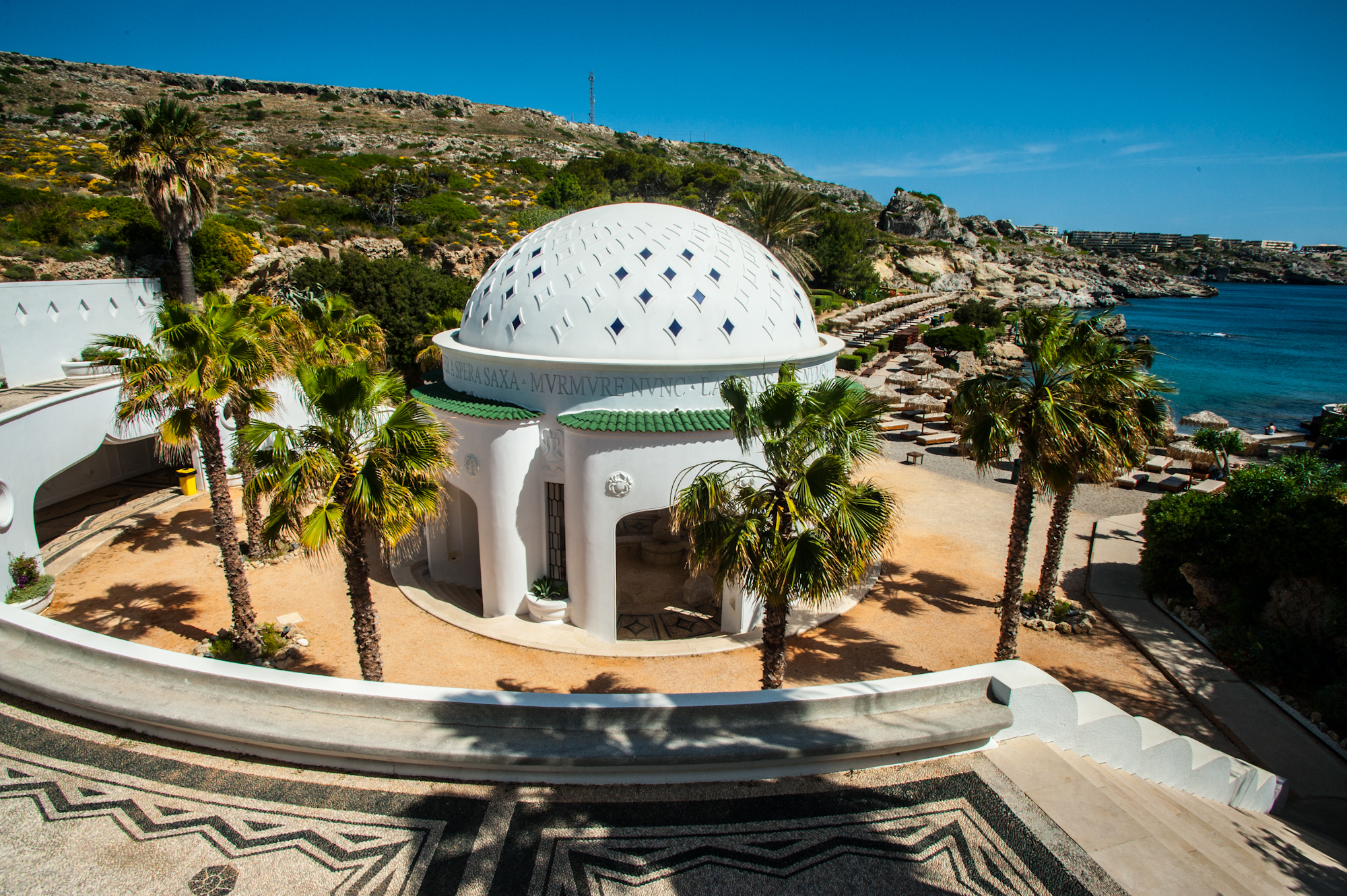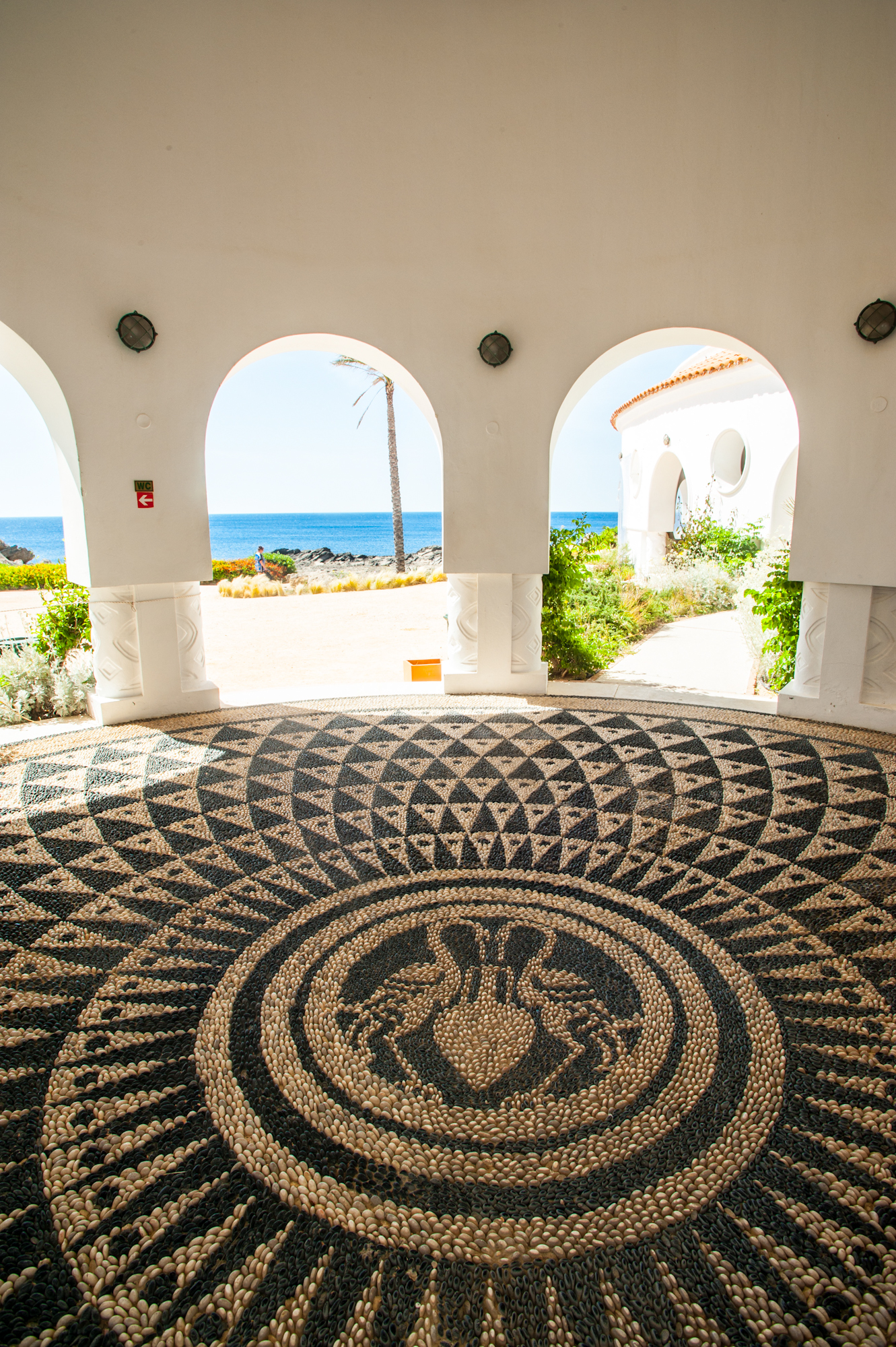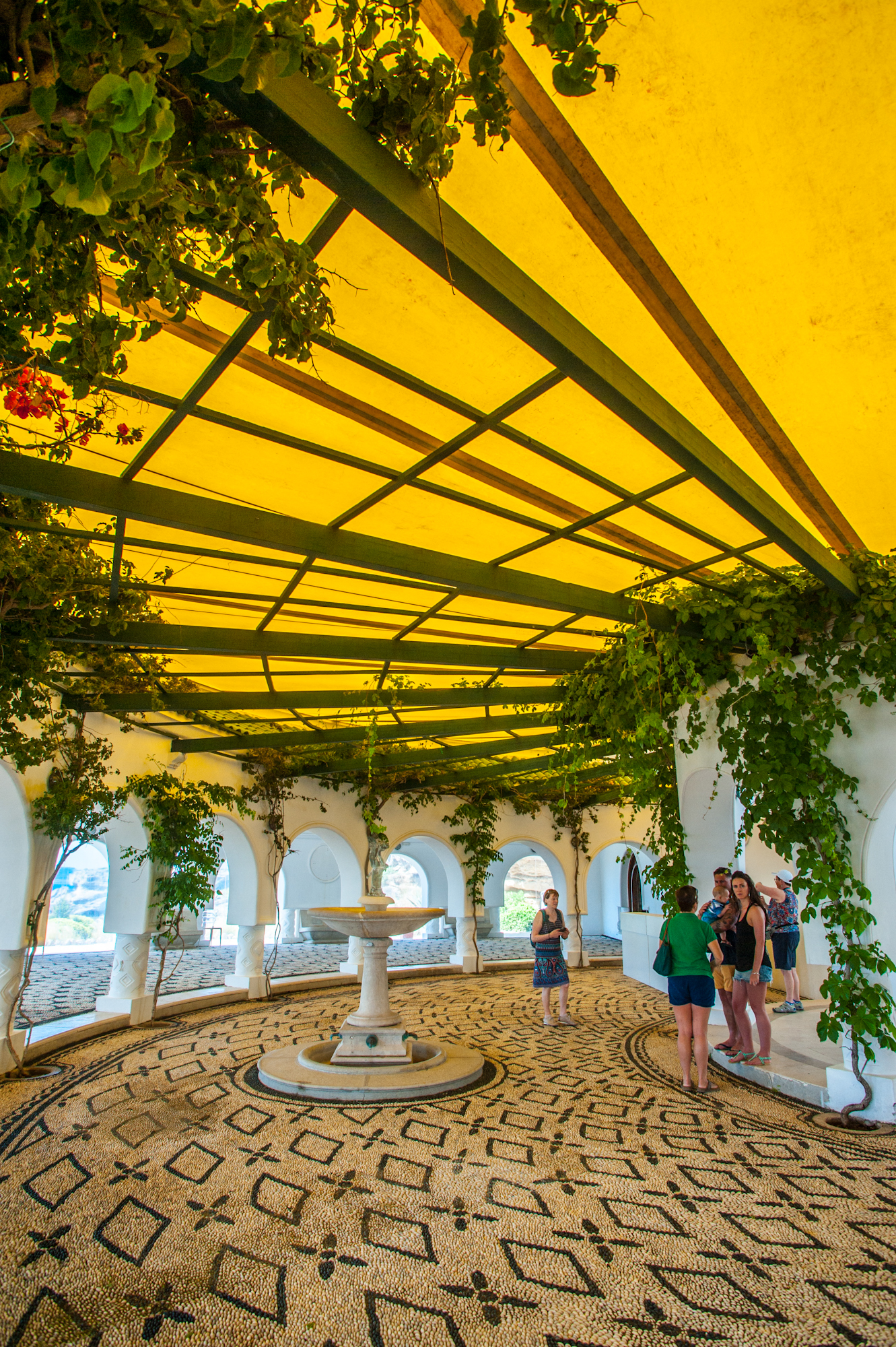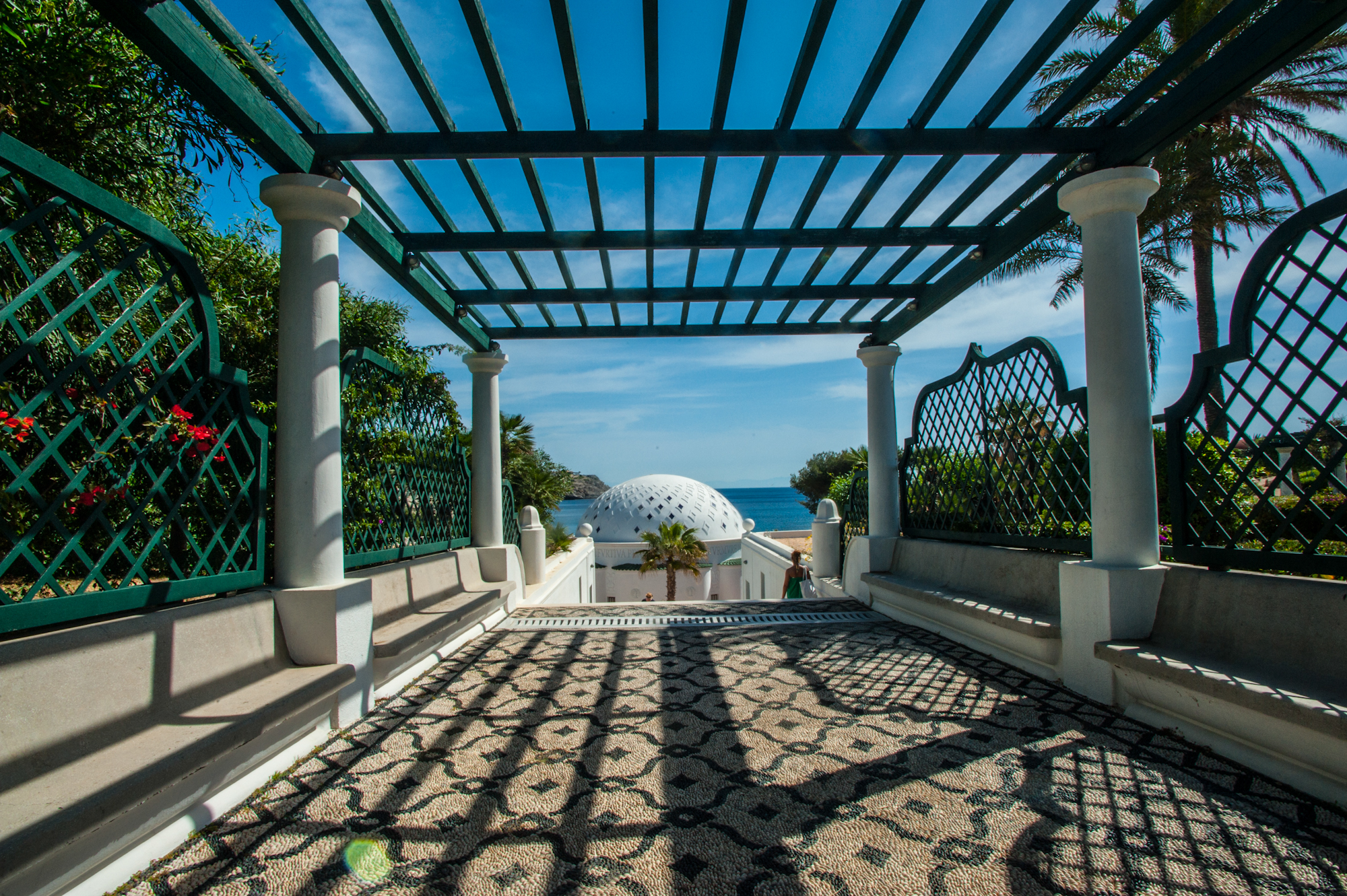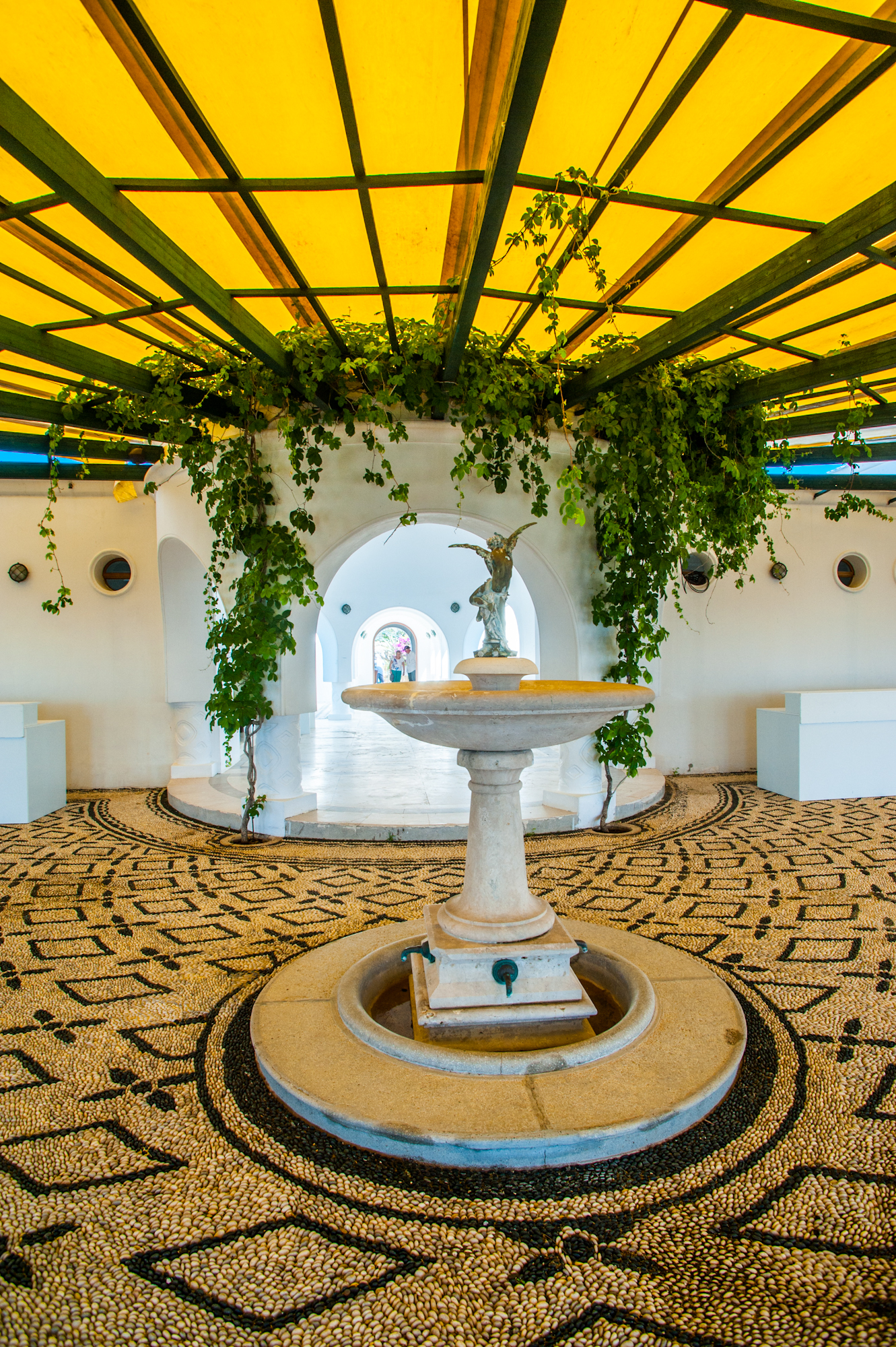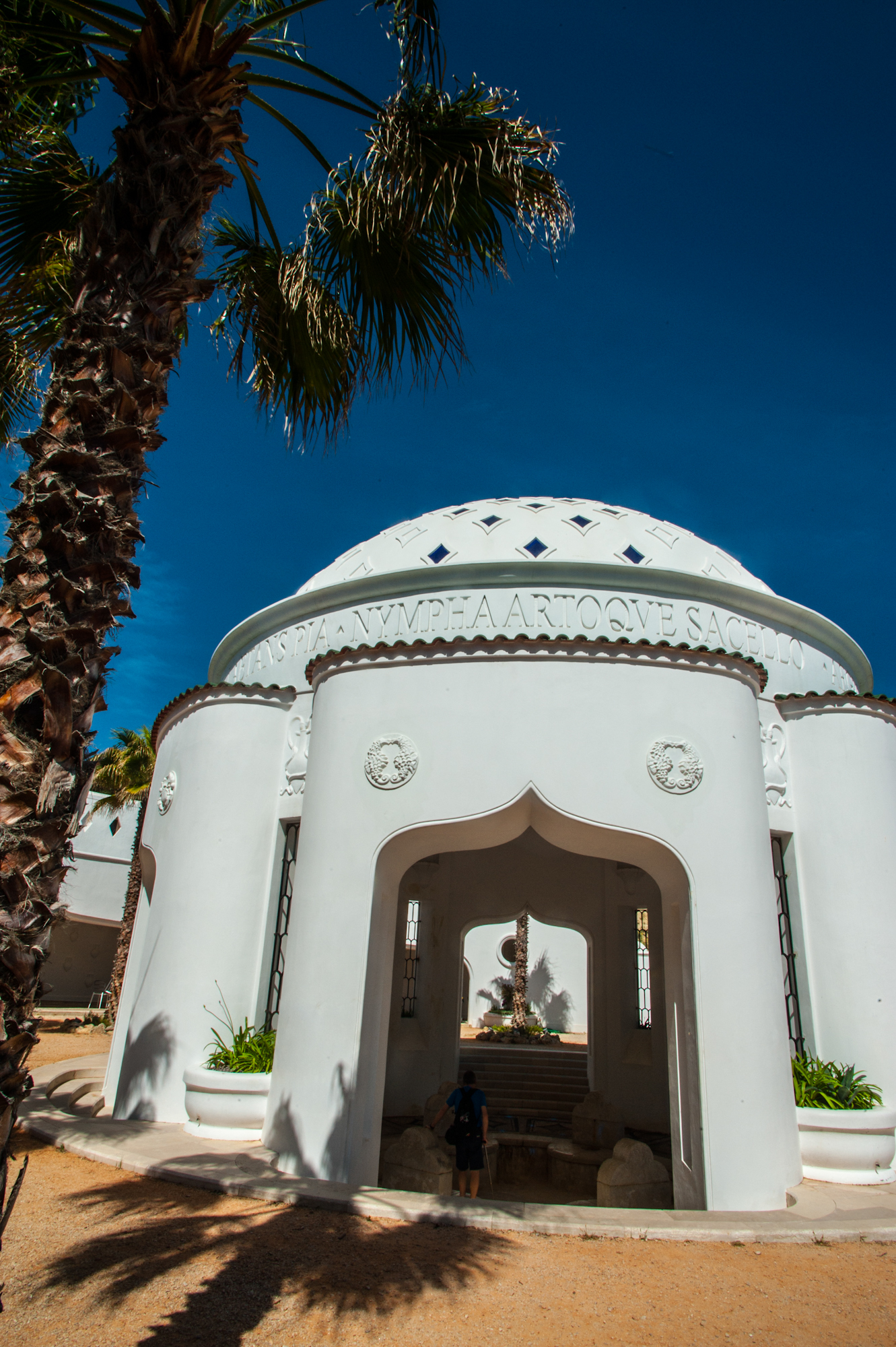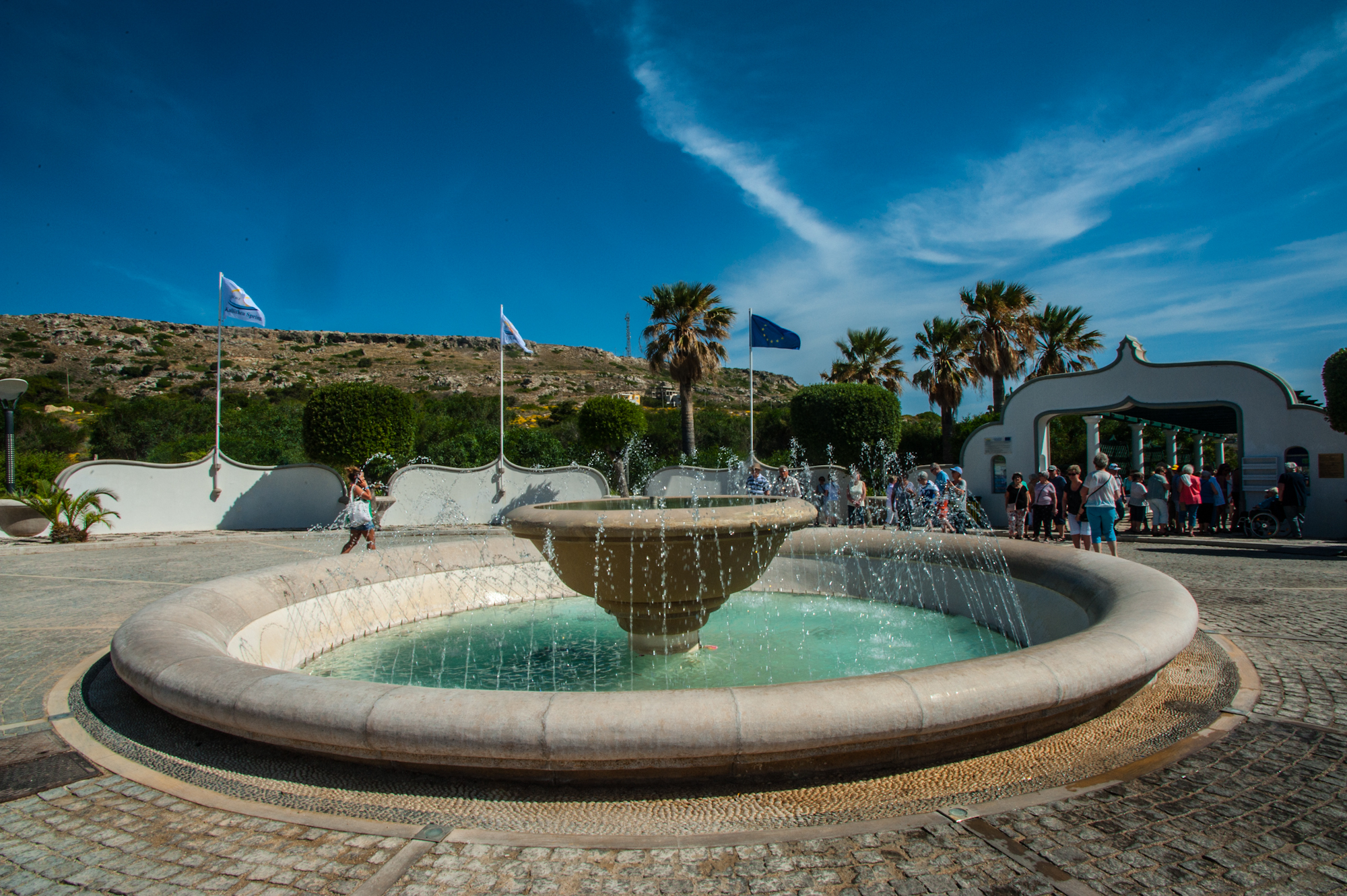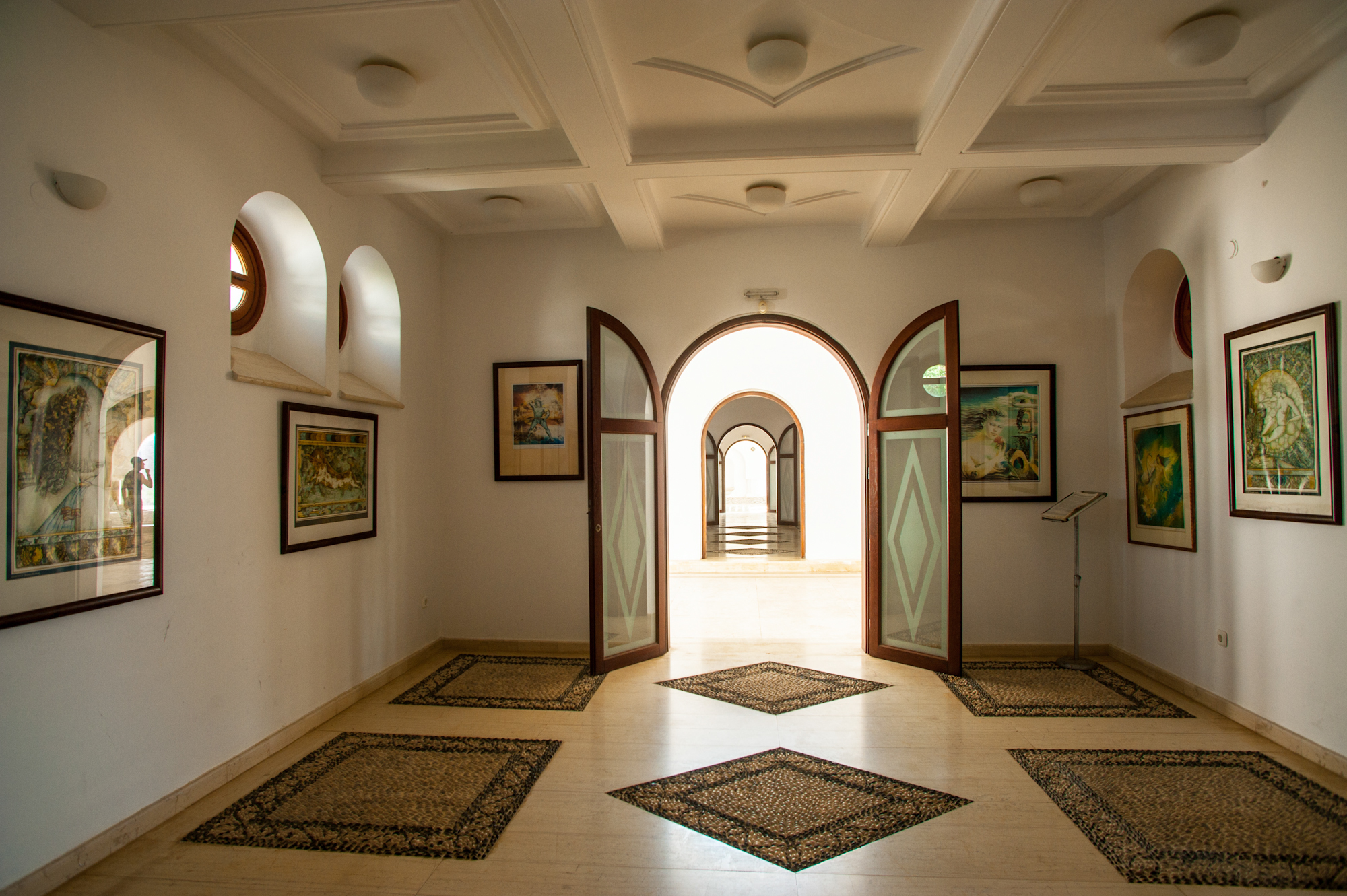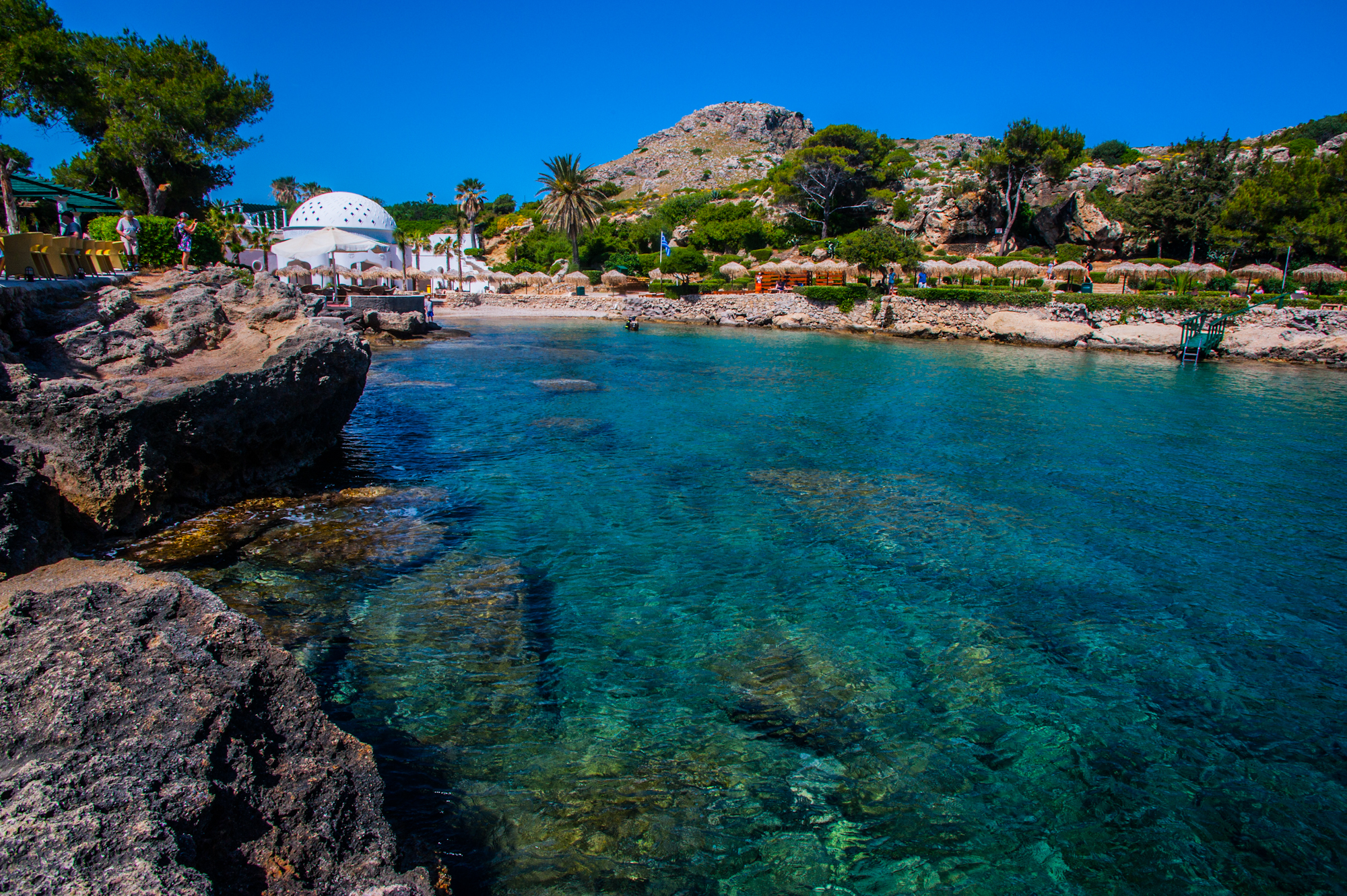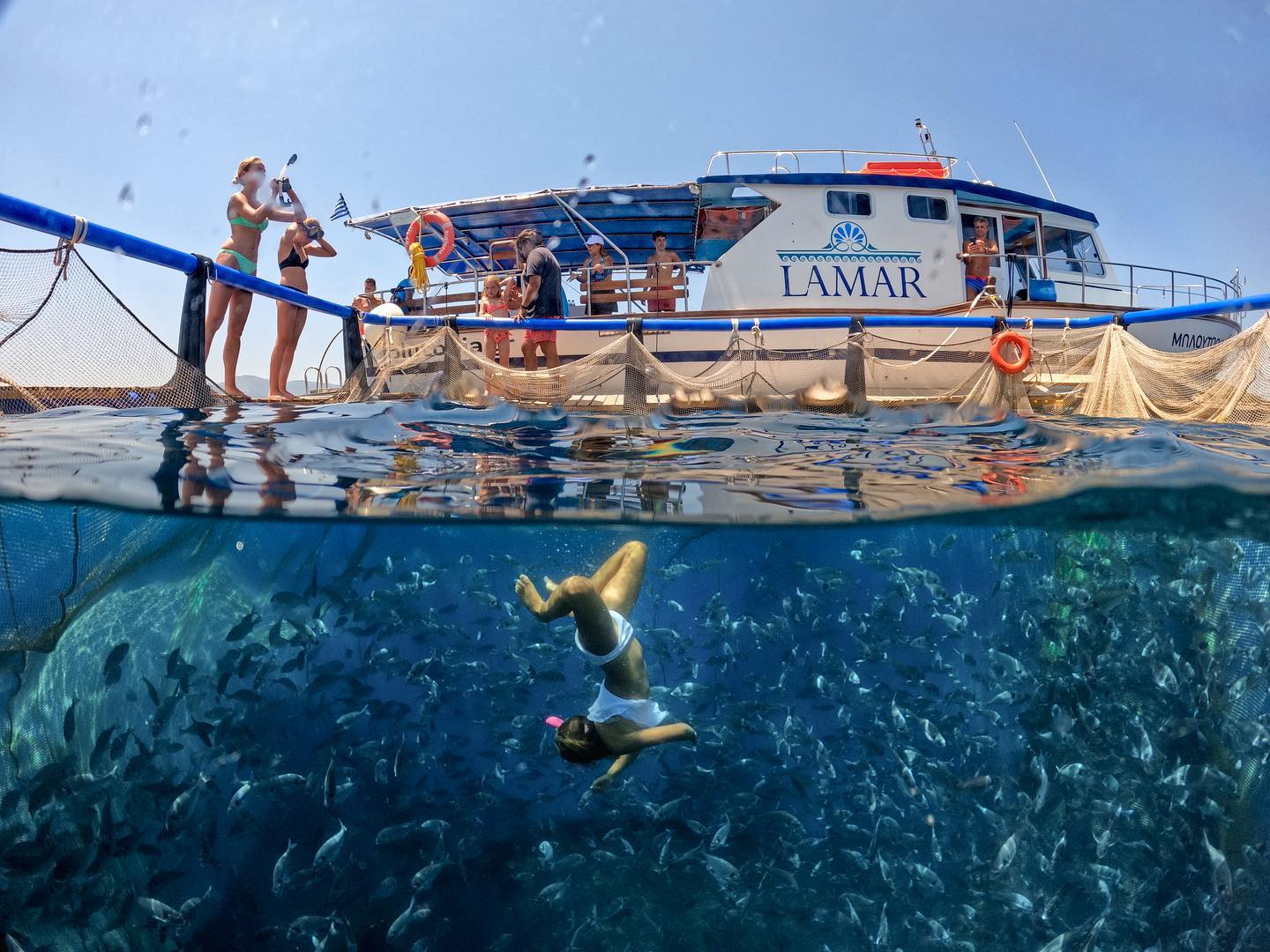Around 10 kilometres south of the city of Rhodes, the Kallithea Springs are considered as one of the most beautiful sights of the Island of the Knights, a must-visit for anyone going there. It’s not by chance that every summer it draws an international crowd, or the fact that it served as the backdrop for Alekos Sakellarios’ popular Greek film “The Bait” (1964), featuring Aliki Vougiouklaki, Alekos Alexandrakis and Dinos Iliopoulos, as well as other international film and TV productions.
Kallithea Springs, named after the eponymous picturesque bay of Kallithea in the northeastern part of Rhodes in Cape Vodi, is known for its reddish waters with curative properties, surrounded by an intricate combination of nature and architecture. The springs also serve as a monument of sorts to history, as the modern spa town is based on buildings inseparably linked with the Italian occupation in the Dodecanese, and especially with the period of Benito Mussolini (1922-1943) and his ambitious plans for Italian domination in the Mediterranean.
Ancient springs and a modern spa town
The healing properties of the waters of Kallithea were known since antiquity, with the earliest evidence dating back to the 7th century BC. After all, their characteristically reddish waters, which sprang from the rocks, were immediately visible to everyone. The springs were believed to be under the protection of the god Poseidon, and as early as the 5th century BC, Hippocrates – also known as the “father of Medicine” – seems to have explored their potential for hydrotherapy. This prospect, however, developed more during the Hellenistic Age, with doctors Herophilus and Erasistratus experimenting with drinking therapy and thermalism around 320 BC.
The reputation of Kallithea Springs remained solid throughout the centuries, but it was during the Ottoman rule in Rhodes (1523-1912) that they experienced a major resurgence, gathering significant crowds every August and September, with many people travelling with their families even from the depths of Anatolia to experience the therapeutic properties. Upon reaching the area, they stayed in makeshift, temporary accommodations or in the “kuspes”, as they called the natural cavities of the surrounding rocks. The healing waters became known as “Tsilónero” among the Greek population of the time, who widely considered them therapeutic for treating various ailments and complaints, including obesity.
What drastically altered the landscape of Kallithea Springs, transforming them into a modern-day spa town, was the conquest of the Dodecanese by the Kingdom of Italy (1912) and the ambitions of Benito Mussolini’s fascist government to display power and superiority in the eastern Mediterranean. This was in line with the broader philosophy that characterised him regarding the latter – which he regarded as “mare nostrum” (our sea), following a model that originated from the period of the Roman Empire’s dominance.
However, this context should not overshadow Mario Lago, who was the governor of the Dodecanese from 1922 to 1936. The cosmopolitan and moderate diplomat, who advocated for peaceful coexistence between local residents and the Italian occupiers (contrary to his oppressive successor Cesare Maria De Vecchi), initiated a scientific study of the waters of Kallithea Springs (1927), which confirmed their therapeutic properties. Based on this, he proposed the creation of a modern spa town following European standards. As this was entirely compatible with the fascist plans for Italian prominence in the Mediterranean, his proposal was not only accepted, but it also received significant backing, enabling its implementation on a grand scale.
The design of the complex was undertaken by the renowned architect of the time, Pietro Lombardi, who followed modern trends, favouring a style more abstract compared to the neoclassicism prevalent until then and incorporating elements of Art Deco. However, what was most significant was the care taken to harmonise the buildings with the idyllic natural environment in Kallithea bay. This credit must go to the architect who oversaw the project and handled its decoration, Armando Bernabiti. The new baths were inaugurated amidst a festive atmosphere in July 1929, timed to coincide with the new road connecting Rhodes City with Lindos. Notably, the King of Italy, Victor Emmanuel III, even attended – hence the official name of the facilities was “Royal Thermae”.
The entrance leads to a central square with a fountain, followed by a gate in Moorish style and a pergola-lined walkway that descends towards the sea. At its end, there are staircases on both the left and right, forming an arcade, surrounded by a small rotunda with a diameter of 14 meters, built over the natural spring, with six gates in Moorish style providing entry, and a statue of the god Eros at its centre. Beneath this, six fountains channel the waters into the central pool. Today, this area hosts weddings (civil ones, of course), receptions, and other ceremonies.
Another path follows, leading to a larger and more characteristic rotunda (there is a relevant sign), from which one can enjoy a panoramic view of both the rest of the complex and the bay of Kallithea. Here, an elliptical arcade is located with benches positioned within it, and in the centre, a dome is discerned, supported by two semi-domes. All the floors of the paths are decorated with mosaics made of white and black pebbles, forming plant patterns and geometric designs, while the outer walls of the complex are adorned with representations inspired by the sea.
It is no coincidence that the Italian state enthusiastically supported the Kallithea Springs project, both by organizing and promoting an international hydrological conference and by issuing a series of stamps featuring images of the baths (now considered quite rare). As a result, until the outbreak of World War II, the Royal Thermae became a cosmopolitan resort of great reach, attracting impressively large crowds every summer, bringing together individuals centred on health treatments (such as arthritis, skin diseases, allergies, asthma, diabetes, etc.) and offering visitors special moments of relaxation and seaside tranquillity.
Decay and Renaissance
Inevitably, World War II interrupted the operation of the baths, while Mussolini’s fall and Italy’s alignment with the Allies placed Rhodes under the control of the Germans, who downgraded the facilities to a concentration camp for Italian prisoners.
In 1948, the Dodecanese officially became part of Greece, and the springs were able to reopen and restore a portion of their former glory. This was also reflected in their relationship with cinema, as it was not only the aforementioned “Lure” with Aliki Vougiouklaki that was filmed here, as were international productions, the most notable among them being the legendary “The Guns of Navarone” by J. Lee Thompson (1961). However, none of these could save the springs from a gradual but steady decline, which led to their closure in 1967.
The first spark of rebirth was the declaration of the complex as a work of art protected by the state (1985), due to its exceptional architectural and morphological character. Based on this, in 1999 the Municipality of Kallithea Rhodes launched an ambitious effort to reconstruct and restore, in a project spearheaded by Mayor Ioannis Iatridis.
The works proved successful, and thus the spa town reopened to the public in 2007, preserving the cosmopolitan spirit of the original Italian design, now refreshed with a more contemporary look.
How to get here
Access to the Kallithea Springs is very easy, and they are less than 10 kilometres from the city of Rhodes: therefore, calculate that you will get here by road in just 15 minutes, crossing the Kallithea coastal avenue towards the south.
The spa town opens daily at 8 in the morning. Coming here, you will also find next to it the beach of the same name, where many people come to swim and enjoy a drink at places such as the “Pane di Capo” that operates next to it, serving food as well. Nearby, three more beaches surrounded by rocks, palm trees and the pine forest of Kallithea are also reachable: these are the beaches of Tasos, Nikos and Oasis, which are also organized, with crystal clear waters.
Read also:
Shopping on Rhodes at some of the Best Stores in the Dodecanese



